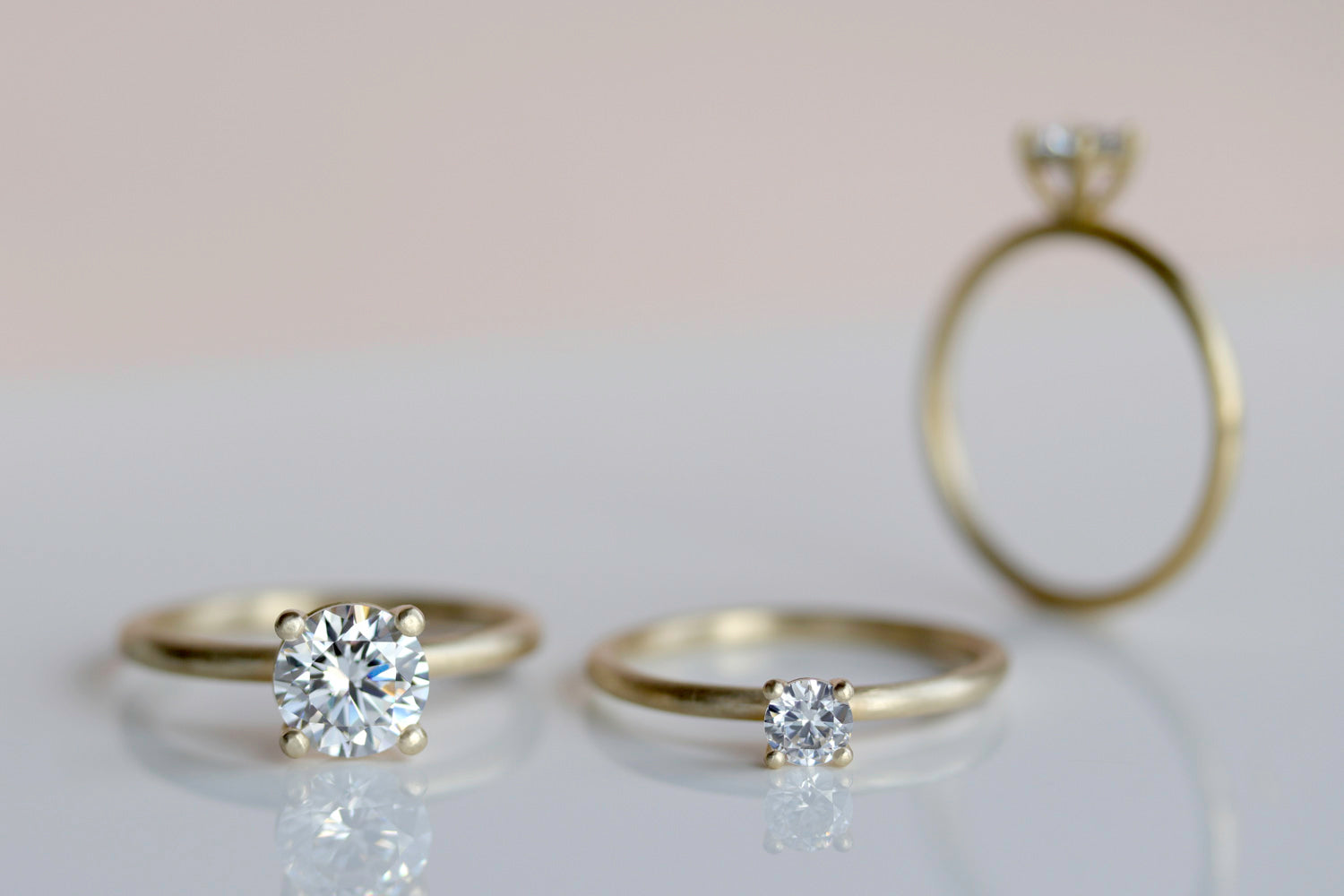Diamond Info

Our Approach to Diamonds
We select diamonds for their visual character – how they sparkle in real life, not just on a certificate. At Aide-mémoire, we work with responsibly sourced stones, including lab-grown, recycled, and traceable origin options. Whether you're choosing a center or accent stone, our goal is to find the best-looking diamond within your budget – one that reflects your values without compromising on beauty or quality.
Standard Diamond Options
Our standard offerings include:
- Lab-grown diamonds (most commonly used)
- Diamond Foundry lab-grown diamonds (available upon request)
- Recycled natural diamonds
- Canadian or Australian mined diamonds (available upon request)
We also offer the option to re-set your own heirloom diamond into one of our designs.
Diamond Grading & Selection
We select stones that are eye-clean, sparkly, and responsibly sourced. Our minimum quality standards for most diamonds are:
- SI clarity or better
- Very Good cut (we aim for Excellent or Ideal when possible)
- H color or better
Natural white diamonds over 0.50 ct often include a grading certificate. Diamonds between 0.25 ct and 0.50 ct rarely include certification. All carat weights and mm dimensions listed are approximate and may vary slightly based on current inventory.
If no diamond is available within your budget that meets our minimum standards, we’ll reach out with options—such as extending the timeline or considering alternative grades.
How We Choose Stones
We generally begin with the carat size you're looking for, then select the best available stone within your budget by prioritizing:
- Cut – the most important factor in a diamond’s sparkle and fire
- Color – we typically work within the D–H range
- Clarity – SI clarity or better, aiming for stones that are eye-clean
We focus on how the diamond will look once set—prioritizing beauty and sparkle over grading reports alone.
Notes on Diamond Terms
-
Carat refers to weight, but we often talk in mm dimensions, since that’s what you’ll visually notice in a piece of jewelry.
-
Fluorescence may be present in some diamonds. In many cases, it has no visual effect; in others, it may slightly reduce cost or help balance warmer tones in lower-color stones.
Start Your Ring Journey
Shop With Confidence

Engagement Ring Basics
Overwhelmed by first-time ring shopping? Start here. We dig into how different stones and metals actually behave, navigating surprise proposals, budget realities, and the technical details that matter, so you can make choices based on what works for you, not marketing.
Read The Guide
Wedding Ring Shopping Guide
We love to geek out about metalsmithing: Mine our knowledge to learn how different alloys behave over time, what band width means for durability, and technical and stylistic considerations for a ring you'll never take off. Oh, except when you should, and we cover that too.
Read The Guide